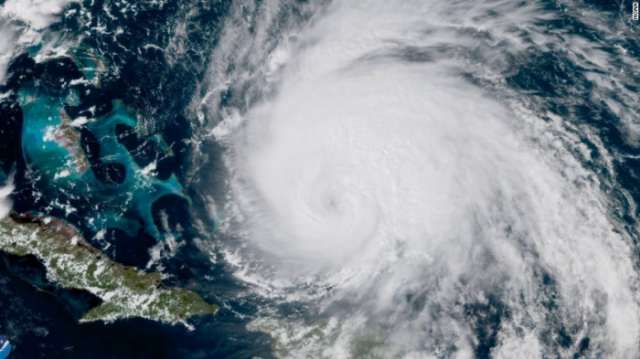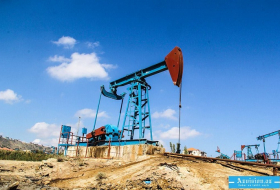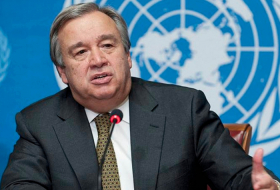It downgraded to a Category 1 before hitting the United States' east coast on Friday.
The European marine environment monitoring service, Copernicus Marine, has called Dorian the most powerful hurricane to hit an Atlantic island, and many experts warn that global warming will make this type of extreme weather event more prevalent.
"There is a strong consensus in the hurricane-science community that a warming climate is leading to more high-intensity hurricanes, such as Cat 4 and 5," Timothy M. Hall, a researcher at NASA's Goddard Institute for Space Studies, told Euronews.
"The details of the causes are complicated, but a first approximation is simply that there is more heat in the ocean in a warmer climate. And this heat is essentially the fuel for the hurricanes."
Warming oceans
Hall explains that warmer water evaporates more easily and when water vapour gets sucked into the storm and becomes rain, it makes the storm more intense.
The Center for Climate and Energy Solutions, an independent, nonprofit organisation, says that rainfall rates are expected to increase by 20% during tropical storms and, "as Hurricane Harvey showed in 2017, this can sometimes be the more destructive impact".
Harvey affected over 100,000 homes and caused billions of dollars of damage in Texas and Louisiana. The same year, Hurricane Maria caused thousands of deaths in Puerto Rico.
Rising sea levels
According to a study published in Nature Climate Change, sea level rise has accelerated since the 1960s, and experts say sea level rise is likely to increase the potential damage of coastal storms.
The Center for Climate and Energy Solutions (C2ES) says sea-level rise "intensified the impact" of Hurricane Sandy which caused $65 billion [€58.9bn] worth of damage in New York, New Jersey, and Connecticut, according to the US National Oceanic and Atmospheric Administration.
"Much of this damage was related to coastal flooding," C2ES says.
Fewer hurricanes, but more devastating
Timothy M. Hall says that as the climate warms, there could be fewer hurricanes, but storms will become more intense.
"These high-intensity storms are the storms that do the vast amount of damage at landfall. So, from a hurricane-risk perspective, it's the upward trends in these strongest storms that matters the most," he told Euronews.
Risk of hurricanes in the Mediterranean
Spanish meteorologist Mario Picazo warned in a tweet that temperatures in the Mediterranean have also increased.
"Much of the sea would be able to feed a hurricane given water temperatures of + 26°C in almost the entire basin," he tweeted.
Mediterranean hurricanes, known as "medicanes", are intense cyclones smaller than hurricanes. They do not last more than a single day and their winds do not exceed 100 kilometres per hour.
Scientists predict that these Mediterranean cyclones will become acquire more tropical characteristics with climate change.
An article published in Advancing Earth and Space Science (AGU)'s Geophysical Research Letters said they could increase in strength by the end of the 21st century.
In 2018, Greece was hit by a rare "medicane" which caused flash flooding.
More about: hurricane climate-change
















































